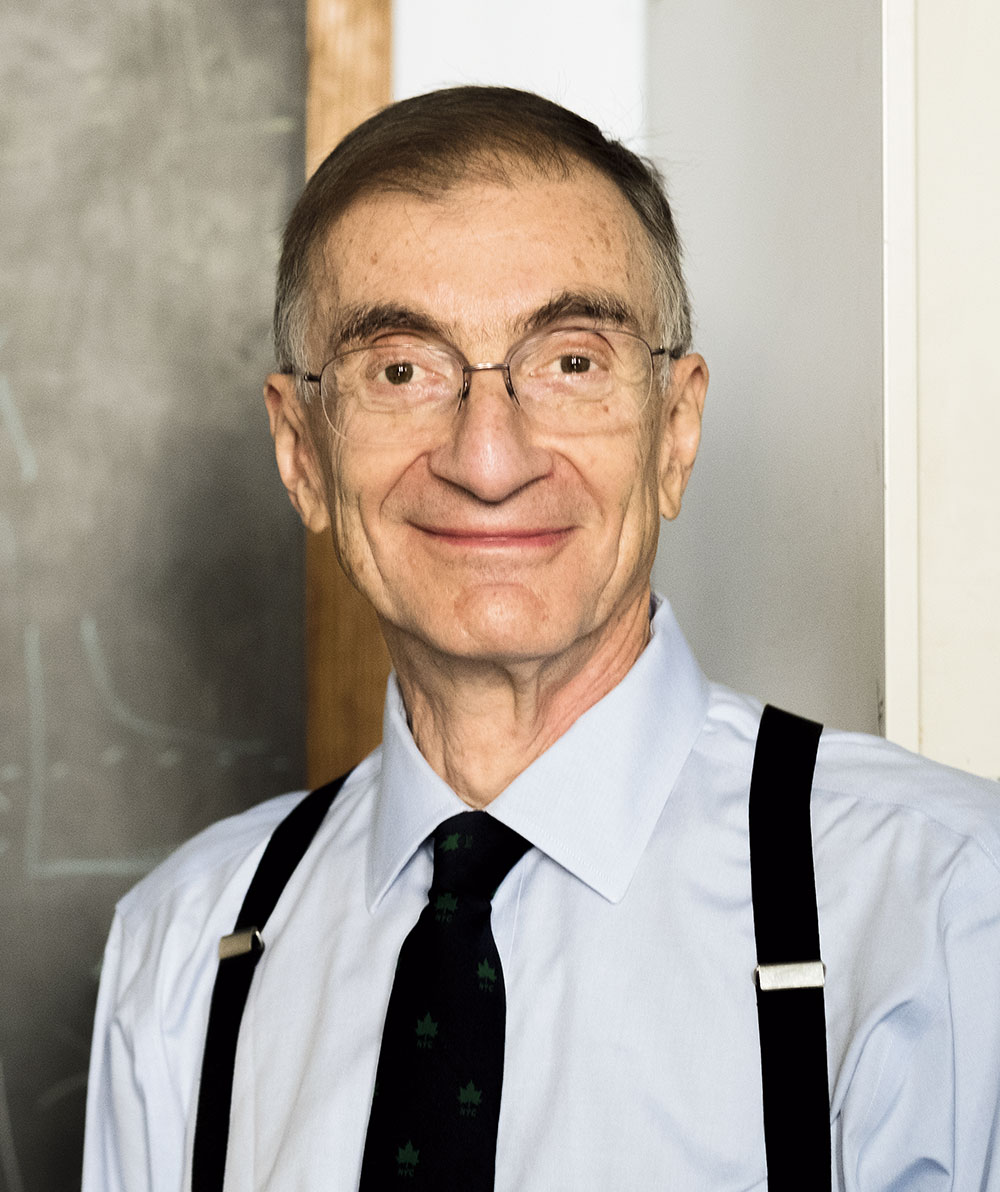
Interview
Joel E. Cohen
Math for future millennia
By Eva Kieslerbefore charles darwin, biology was simple. A horse was a horse, and scientists didn’t care much about differences among horses. The concepts of living populations, and the diversity of individuals within them, were not in vogue.
“People just didn’t think in those terms,” says Joel E. Cohen, a mathematical biologist who has spent more than five decades developing new ways to study populations. “Biological variability was usually regarded as irrelevant noise.”
But the alleged noise was highly relevant to Darwin and some of his contemporaries. Variability, they argued, is the raw material of evolution and occurs among all living things. This idea profoundly changed our view of the world and is conventional wisdom for today’s biologists. Mathematicians, on the other hand, are still figuring out how to handle it.
“New biology demands new mathematics,” says Cohen, the Abby Rockefeller Mauzé Professor. “The tools we use today to deal with population variability are still blunt.” Cohen’s work focuses on creating better tools, which he hopes will help generate new ways to understand diversity—and potentially take science in directions we cannot yet envision.
We asked Cohen to tell us more.
What is it about diversity that traditional math cannot cope with?
Populations sometimes have strange properties. Imagine, for example, that you measure the heights of 10 people and calculate the average. Then you repeat the experiment with a hundred people, a thousand people, and so on.
Traditionally, we’d expect that as we include more people, our calculated averages will converge to a single number—and for height, this does happen. But for certain other things—like hospital discharge bills, flood insurance claims, and other things people care about—it turns out that the more we increase our sample size, the bigger our chances of including an extremely large value that will yank the average dramatically upward.
“Most biologists don’t give much thought to the fact that many of their most routine scientific tools derive from the brilliance of some dead mathematician.”
Consider extreme weather events, for example. In 2005, the year of Hurricane Katrina, damages from this and other billion-dollar weather events cost a record-high $215 billion. Some people in the insurance industry considered that year a fluke, but they were wrong. In 2017, we had Hurricanes Harvey, Irma, and Maria, and all of a sudden, the record cost jumped to $306 billion.
Traditional statistical approaches sometimes miss the boat by discarding extreme events as outliers. Colleagues at Columbia University and I are pursuing new tools to understand so-called heavy-tailed laws that describe situations when, as was the case with the hurricanes, averages of the past don’t predict the future. Part of the challenge is to figure out when and why nature sometimes gives us height-like variations, and other times hurricane-like variations.
So how might biology benefit from this new math?
In the same way biology benefits from any new tool: by seeing things we haven’t seen before.
I like to think of the arrival of the microscope. Out of the blue, it revealed the presence of cells, microbes, and other things invisible to the naked eye—things whose existence people hadn’t imagined before. Mathematics is biology’s next microscope, only better; it can reveal hidden realities both in optics and in other kinds of data. For example, computational tools to compare genetic sequences—which to a large degree are based on algorithms developed by the late Rockefeller mathematician Peter H. Sellers—have transformed our ability to study the genetics of health and disease.

Data
Humanity is on the move. An estimated one billion people are presently migrating, and about one forth of them are changing countries.
Most biologists don’t give much thought to the fact that many of their most routine scientific tools derive from the brilliance of some dead mathematician. Every time you put data on an x-y plot, you’re using an innovation that was revolutionary in the seventeenth century: Descartes added a system of x-y coordinates and numbers onto Euclid’s serene plane, creating a virtual microscope for numerical relationships.
I’m betting on the hope that new mathematical models, including heavy-tailed laws, will be similarly fundamental for future life scientists. Today we’re mainly using them to study humans, animals, and plants. We’re asking, for example, if these tools can change the way we think about epidemics, or what they might teach us about preparing for an Ebola outbreak. In the future, however, they may become just as relevant in the study of cells and molecules.
So if math is stimulating biology, is biology also stimulating math?
Absolutely, and this is something I experience in my own work. In fact, wanting to solve practical problems—biological or humanitarian ones, or preferably both at the same time—is my main motivation for building mathematical tools in the first place. I’m especially interested in infectious diseases and access to food in poor countries. I also work on human migration and mortality, and how humans affect our environment and vice versa.
For example, my work on heavy-tailed laws arose out of research I’m pursuing with colleagues in Argentina on Chagas disease, a devastating infection that afflicts millions of people, mainly in rural villages of Latin America. We began working on these math tools in the course of studying the insect populations that spread Chagas, and our results have led to affordable, low-tech strategies to limit the spread of the disease by improved bug surveillance and control.
In other work, my colleagues and I have developed algorithms to predict the international migration of peoples, an area of major uncertainty in demographics. Techniques for analyzing the past and projecting the future of migrations, births, and deaths provide crucial foundations for everything from public health policy to climate science.
Maybe the most fun part of our work is when we’re trying to solve a problem and realize that it contains a new question that mathematicians haven’t yet answered. For me, population biology is the greatest inspiration to explore untapped areas of mathematics—with the hope of maybe proving something new, beautiful, and scientifically useful. 